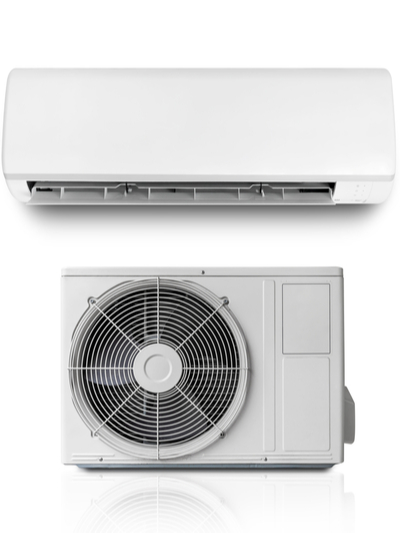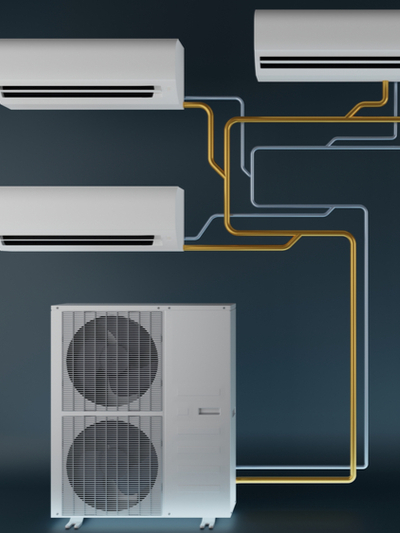Every commercial setting has a unique set of requirements when it comes to its indoor environment. From small shops and cafes to multistorey corporate buildings, creating the ideal conditions all comes down to the design and purpose of a particular premises.
As such, there’s no ‘one size fits all’ for commercial air conditioning, but rather a countless set of possible configurations to suit varying needs.
That said, there are three main types of commercial air conditioning systems that are commonly used. These are:
In this post, we’ll walk you through each in turn, the benefits they bring, and the particular settings they’re most suitable for.

These are the most affordable solutions, and in many cases, the most straightforward to install.
Single split type air conditioning systems are used in individual rooms. They consist of one external unit and one indoor unit, connected via piping and electrical wires, meaning no ductwork is required.
The exterior unit houses the ‘noisy’ components - the compressor, and the condenser and expansion coils - whilst the indoor unit delivers cooled, filtered air into the desired room. Most modern units allow for heating as well as cooling, giving you complete year round temperature control.
Whilst single split systems can be installed in multiple rooms, each indoor unit needs a corresponding external unit. This means multiple installations require sufficient outdoor space. That said, there’s a benefit in that each system works in isolation, so if one unit breaks down, the rest remain unaffected.
Best suited for: small commercial spaces including shops, cafes, restaurants and individual offices.

Multi split systems are a more versatile version of single splits, allowing you to control conditions in various spaces.
Instead of one for one, with a multi split you can connect several indoor units to one larger, central external unit, as many as up to nine depending on the model chosen.
Each indoor unit can be individually controlled to meet the exact needs of the room in which it’s located. You can also vary the type of indoor unit used to suit the look and layout of each space in question.
Multi split systems offer greater energy efficiency than several single splits, and require less outdoor space for the external unit. However, they do come with a more complex installation process, which is both longer in duration and more costly than a single split alternative.
This is often outweighed though by the energy efficiency afforded in the long run.
Best suited for: larger spaces with multiple rooms and/or multiple floors.
VRF and VRV are two terms used interchangeably - because they both mean the same thing.
The technology behind these systems was first introduced by Daikin, and referred to as Variant Refrigerant Volume. Daikin holds the copyright on this terminology, so Variant Refrigerant Flow is more commonly used.
These systems work in very much the same way as single and multi split systems. However, replacing the large indoor units is a series of smaller air handlers. The flow of refrigerant to these air handlers can be varied, hence the term VRF, allowing a more flexible approach to climate control.
VRF air conditioning comes in two main types:
Heat pump systems - these are capable of cooling and heating, though cannot do both at the same time. They’re most commonly used in open plan spaces with a single temperature requirement.
Heat recovery systems - with these, you can control the heating and cooling of any given zone in isolation. This makes them an ideal solution where multiple rooms are involved, like hotels for example, or buildings housing data centres with adjoining offices.
Heat recovery VRF systems are incredibly energy efficient, as they carry otherwise wasted heat from cooled zones and redistribute it where needed.
So which solution is right for your business?
Whilst we’ve discussed the main types of commercial air conditioning, as we mentioned at the start, there are countless possible configurations, and the right solution for your business needs depends on multiple factors.
At Loughborough Air Conditioning, we offer a free consultation service. Our qualified engineers have years of experience designing custom applications to suit varying requirements.
